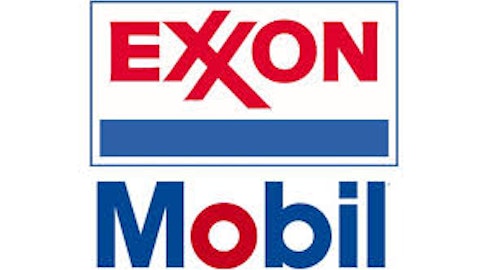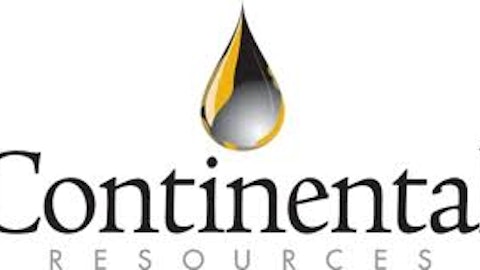The WTI crude oil price is currently $106 a barrel after having experienced a substantial increase in the past weeks. Energy prices were up 2.9% month-over-month in June. In this article, I will be analyzing three Exploration & Production, or E&P, companies based in Texas that could benefit from this trend in oil prices.
Risky vertical integration strategy?
Pioneer Natural Resources (NYSE:PXD) is an oil and gas exploration and production company based in Irving. Growth is led by Pioneer Natural Resources (NYSE:PXD)’s main properties: the Spraberry field, Eagle Ford Shale, and Barnett Shale Combo. Its cornerstone asset is the Spraberry oil field, accounting for more than 40% of production and the majority of its reserves.
For more than a decade, Pioneer Natural Resources (NYSE:PXD) has shown profitable, double-digit production activity without interruption and has consistently been ahead of the curve regarding services procurement and cost control. Management has implemented a vertical integration strategy that gives the company control over drilling rigs, sand, fracking equipment, and midstream elements. This provides a significant competitive advantage ensuring equipment and services availability, and helps preserve margins and returns. Nevertheless, this strategy is right when industry activity is glowing, but can be a drag on returns when operations fall.
As is the case with any E&P company, results for Pioneer Natural Resources (NYSE:PXD) are directly exposed to oil and gas price volatility and subject to market forces. Consequently, Pioneer uses derivative financial instruments to manage price risks associated with production. However, these hedging activities expose the company to the risk of financial loss and limit the benefit of a price increase of natural gas and oil.
At year-end 2012, Pioneer Natural Resources (NYSE:PXD) showed reserves were 1.1 billion barrels of oil equivalent, or boe, with net production of 156 Mboe per day. Since Pioneer Natural Resources (NYSE:PXD)’s stock is expected to perform in line with the broader market, I’d recommend holding on the firm at this time.
Geo-political risks embrace Apache’s strategy

Apache Corporation (NYSE:APA) has a large geographically-diversified reserve base and a well-balanced exposure to natural gas and crude oil. However, there is a limited upside potential for shares, taking into account production in international markets can be difficult to predict at times of political unrest. Additional risks include project timing delays due to geo-political instability, precisely risky in Egypt and Argentina, and regulatory uncertainty towards price controls and taxes that could eat into cash flow and profitability.
Apache Corporation (NYSE:APA) has high sensitivity to weather disruptions in the Gulf of Mexico and Australia. What’s more, Apache Corporation (NYSE:APA) sells natural gas in Western Australia under long-term, fixed-price contracts, many of which contain price escalation clauses based on the Australian CPI. This exposes the company to tighter margin.
At year-end 2012, Apache Corporation (NYSE:APA) showed reserves totaled 2.9 billion boe, with net production of 748 mboe/d. Apache plans to pay down debt and to buy back up to 30 million shares of common stock with the proceeds of the sale of assets by year-end 2013. As such, Apache Corporation (NYSE:APA) is expected to perform like the market and has a neutral recommendation.
Disappointing production trend
Exxon Mobil Corporation (NYSE:XOM) is the largest publicly traded energy company that explores, produces, and refines oil around the world. Approximately 83% of Exxon Mobil Corporation (NYSE:XOM)’s earnings come from its operations outside the U.S.
Exxon Mobil Corporation (NYSE:XOM) plans to invest $185 billion over the next five years. The program includes the Kearl Oil Sands development project in Canada, four in West Africa and Kashagan Phase 1 in Kazakhstan. In addition, the company is also involved in a large liquefied natural gas project in Papua New Guinea. However, it has had a continued disappointing production trend for the last seven quarters, partly due to continued weak natural gas and oil prices.
Main threats include government regulations, renewable fuel prices and weather conditions. These can impact the company’s earnings and cash flows. Political risks come from the company’s largest producing regions in Asia, Africa and South America. By investing in large, capital-intensive projects, Exxon Mobil Corporation (NYSE:XOM) also runs the risk that commodity prices will decrease dramatically, making those projects no longer economical.
In 2012, it produced 2.2 million barrels of oil and 12.3 billion cubic feet of natural gas a day. At year-end 2012, reserves stood at 18.2 billion boe, additionally to 7.0 billion boe for equity companies. A neutral recommendation on the stock is based on the above mentioned risks amid the company’s willingness to consistently return free cash flow generations to shareholders. Over the past five years, Exxon Mobil Corporation (NYSE:XOM) paid over $40 billion in dividends and repurchased $100 billion worth of stock.
Bottom line
How things stand, the upside potential for these three shares is quite limited. Taking into consideration their sensitivity to gas and oil price volatility, drilling results, costs and geopolitical risks, all three of them are expected to perform in line with the broader market, thus deserving neutral recommendations.
The article Will Oil Prices Be Up For Long? originally appeared on Fool.com and is written by Damian Illia.
Damian Illia has no position in any stocks mentioned. The Motley Fool owns shares of Apache. Damian is a member of The Motley Fool Blog Network — entries represent the personal opinion of the blogger and are not formally edited.
Copyright © 1995 – 2013 The Motley Fool, LLC. All rights reserved. The Motley Fool has a disclosure policy.





